KYOKO IBE



Kyoko Ibe, arguably Japan’s most respected paper artist, has grounded her recent practice in the recycling of antique documents from pre-modern times. She had already garnered international recognition through her work with ganpi, paper made from the inner bark of Diplomorpha sikokiana (an upland shrub), a material she still uses to fashion weightlesslooking, large-scale installations or stage sets that often are kept in constant motion by ambient breezes. During the present century, however, she has also been creating pictorial compositions, typically folding screens, from antique washi paper and myriad paper fragments—receipts, contracts, bills , and letters—that were brushed in centuries past.
it, imparting a range of shades from light gray to black. She applies more and more water, allowing the pulp to assume a life of its own in a response to raw materials—with its roots in both Shinto animism and the Buddhist quest for unity with nature— that is fundamental to traditional Japanese culture. Blending with the microfibers of the support, the molten mass forms atmospheric compositions that range from near-representational—evoking the night sky, a stormy sea, or a distant mountain range—to near-abstract, with added touches of mica, mineral pigments, indigo dyes, or ink intensifying the screens’ visual impact.
Ibe’s screens normally incorporate a few fragments that still bear a single legible character or perhaps one or two lines of vertical, cursive text, but mostly she pulps the old paper with water so that the rich sumi ink, made from burnt pinewood and glue, runs into
American historian Amy Stanley’s acclaimed Stranger in the Shogun’s City (Penguin Random House, 2020), a recent work of “critical fabulation,” used evidence from scattered hand-scribbled documents to painstakingly retrieve and recreate the trials and tribulations of a young woman in nineteenth-century Edo (Tokyo). No less imaginatively and powerfully,
Each of these majestic compositions also conveys the artist’s conviction that preindustrial handmade paper is an embodiment of the traditional Japanese sense of harmony with nature alongside the down-toearth thrifty virtues of earlier times when paper was a valued commodity, rarely discarded and endlessly reused.
Ibe pursues a similar mission in visual form, harvesting Japan’s vast heritage of disposable manuscript documentation to create a multilayered palimpsest of vanished lives given fresh vigor by the very resilience of the artist’s raw materials. Ibe harvests many of her paper
scraps from locations in the north of the country, vestiges of communities that no longer exist, lost to history through natural disaster, war, or economic decline, thus lending added poignancy to a project of remembrance that seems all the more central to the Japanese experience following the devastating earthquake, tsunami, and nuclear disaster of March 2011.
Each of these majestic compositions also conveys the artist’s conviction that preindustrial handmade paper is an embodiment of the traditional Japanese sense of harmony with nature alongside the down-to-earth thrifty virtues of earlier times when paper was a valued commodity, rarely discarded and endlessly reused. With the passage of time this recycled antique natural resource grows ever more beautiful and evocative, ever more expressive of its mission as kankonshi (“paper that brings souls back to life”).
Written by Joe EarleWith the passage of time this recycled antique natural resource grows ever more beautiful and evocative, ever more expressive of its mission as kankonshi (“paper that brings souls back to life”).

FUROSAKI , 2022
Four-panel folding tea screen; recycled antique ganpi paper fibers, ink, document fragments, mica, mineral pigments and gold
28 3/4 x 72 3/4 inches
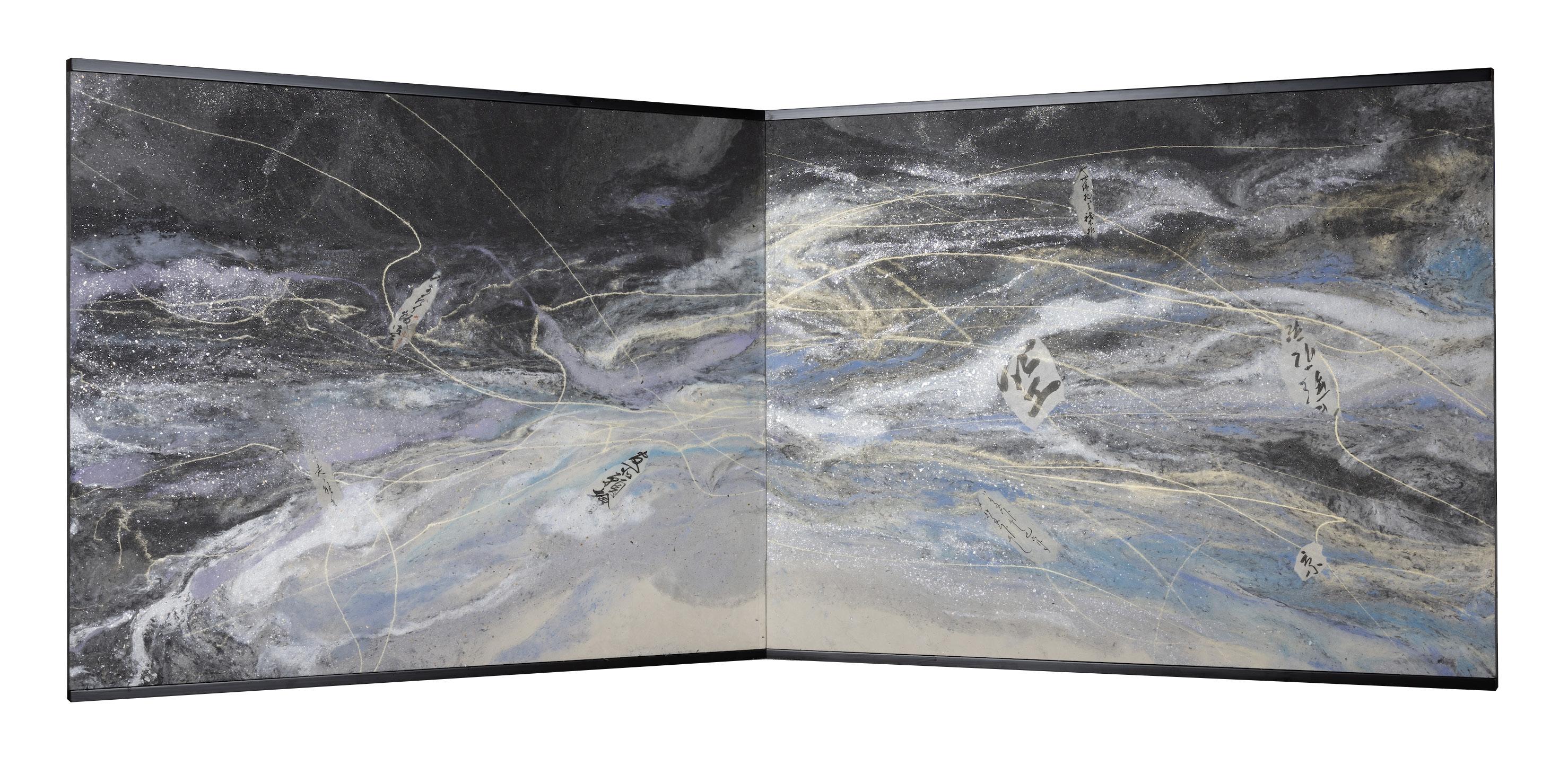
FUROSAKI , 2022
Four-panel folding tea screen, double-sided work; recycled antique ganpi paper fibers, ink, document fragments, mica, mineral pigments and gold
28 3/4 x 72 3/4 inches
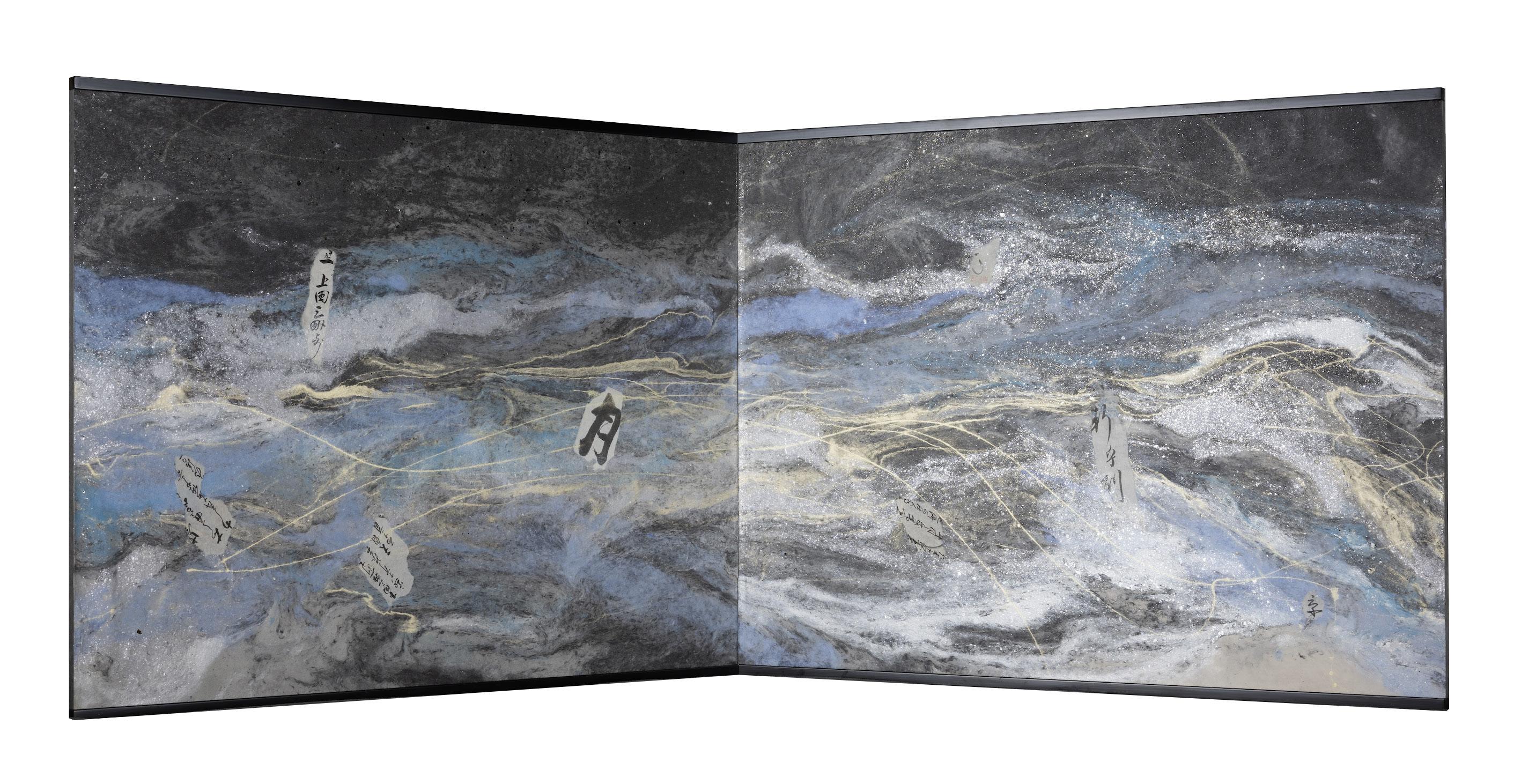
SAKUHIN (WORK), 2022
Four-panel folding screen, double-sided work; recycled antique ganpi paper fibers, ink, document fragments, mica, mineral pigments and gold
48 3/4 x 95 inches
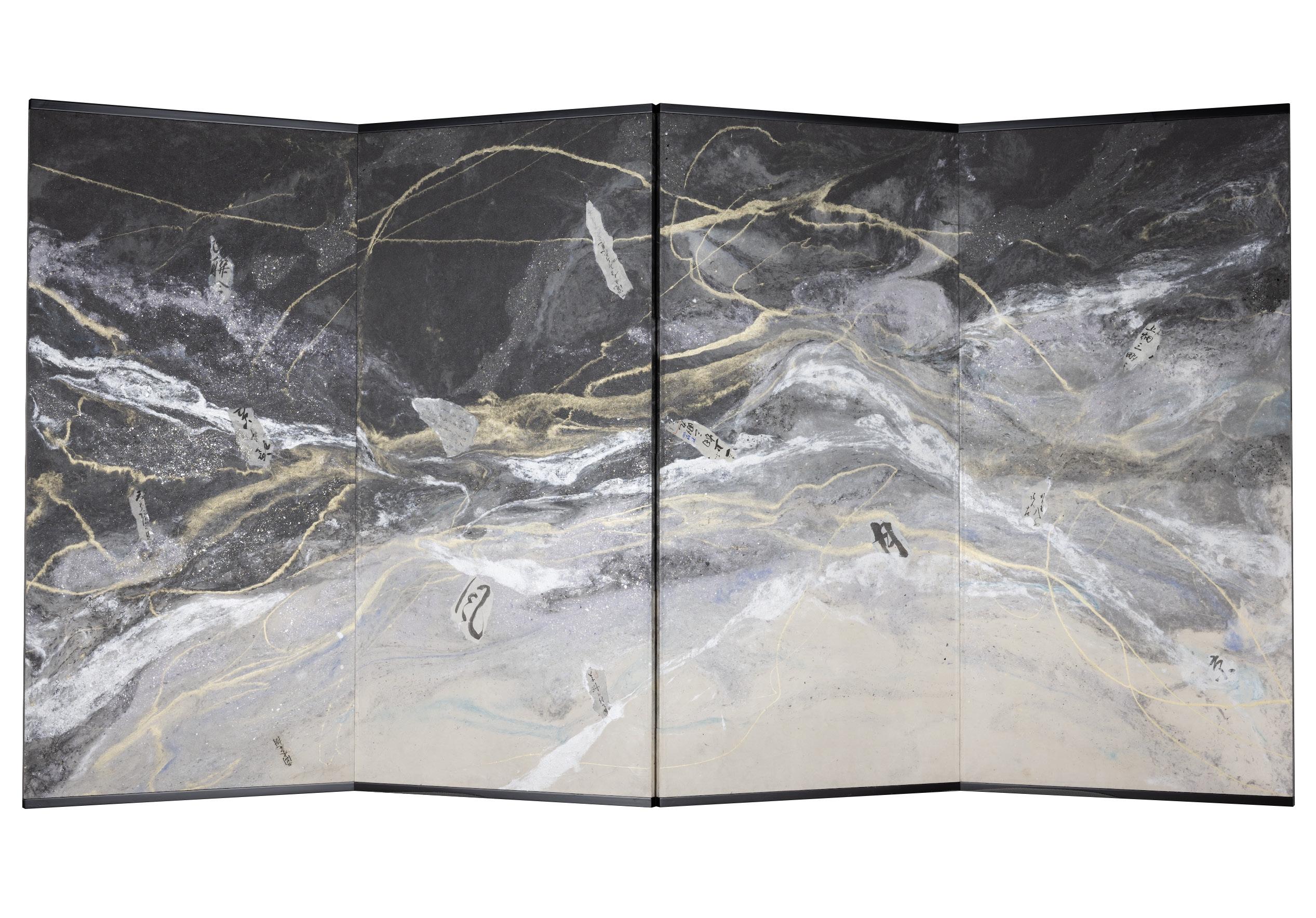
SAKUHIN (WORK) , 2019
Four-panel folding screen; recycled antique ganpi paper fibers, ink, document fragments, mica and mineral pigments 68 1/2 x 110 inches

SAKUHIN (WORK) , 2019
Four-panel folding screen; recycled antique ganpi paper fibers, ink, document fragments, mica and mineral pigments 68 1/2 x 110 inches

SAKUHIN (WORK) , 2019
Four-panel folding screen; recycled antique ganpi paper fibers, ink, document fragments, mica and mineral pigments 59 1/2 x 106 inches

SAKUHIN (WORK) , 2019
Four-panel folding screen; recycled antique ganpi paper fibers, ink, document fragments, mica and mineral pigments 69 1/4 x 102 inches
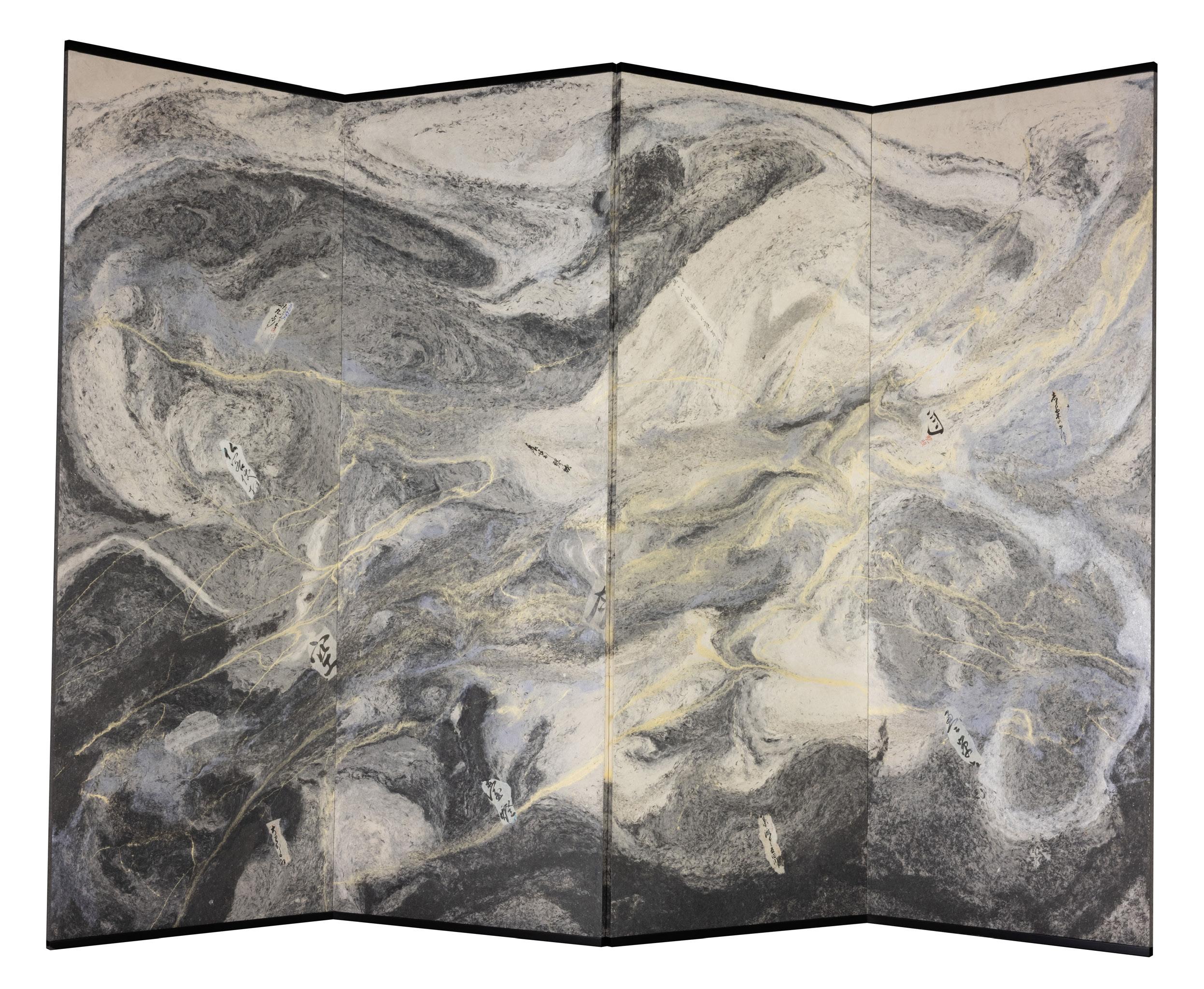
SAKUHIN (WORK) , 2019
Four-panel folding screen; recycled antique ganpi paper fibers, ink, document fragments, mica and mineral pigments 69 x 102 inches
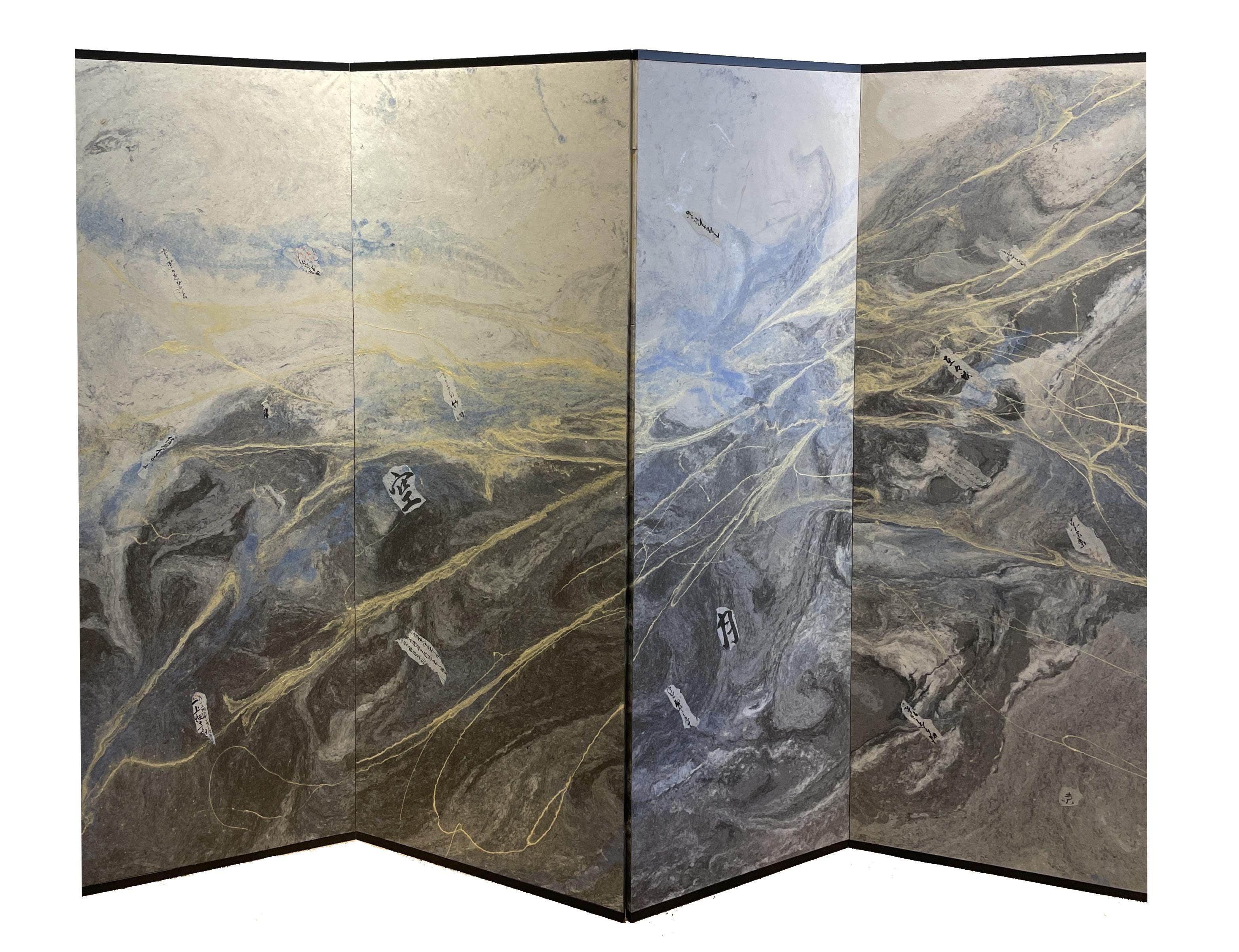
SAKUHIN (WORK) , 2019
Four-panel folding screen; recycled antique ganpi paper fibers, ink, document fragments, mica and mineral pigments 69 x 100 inches
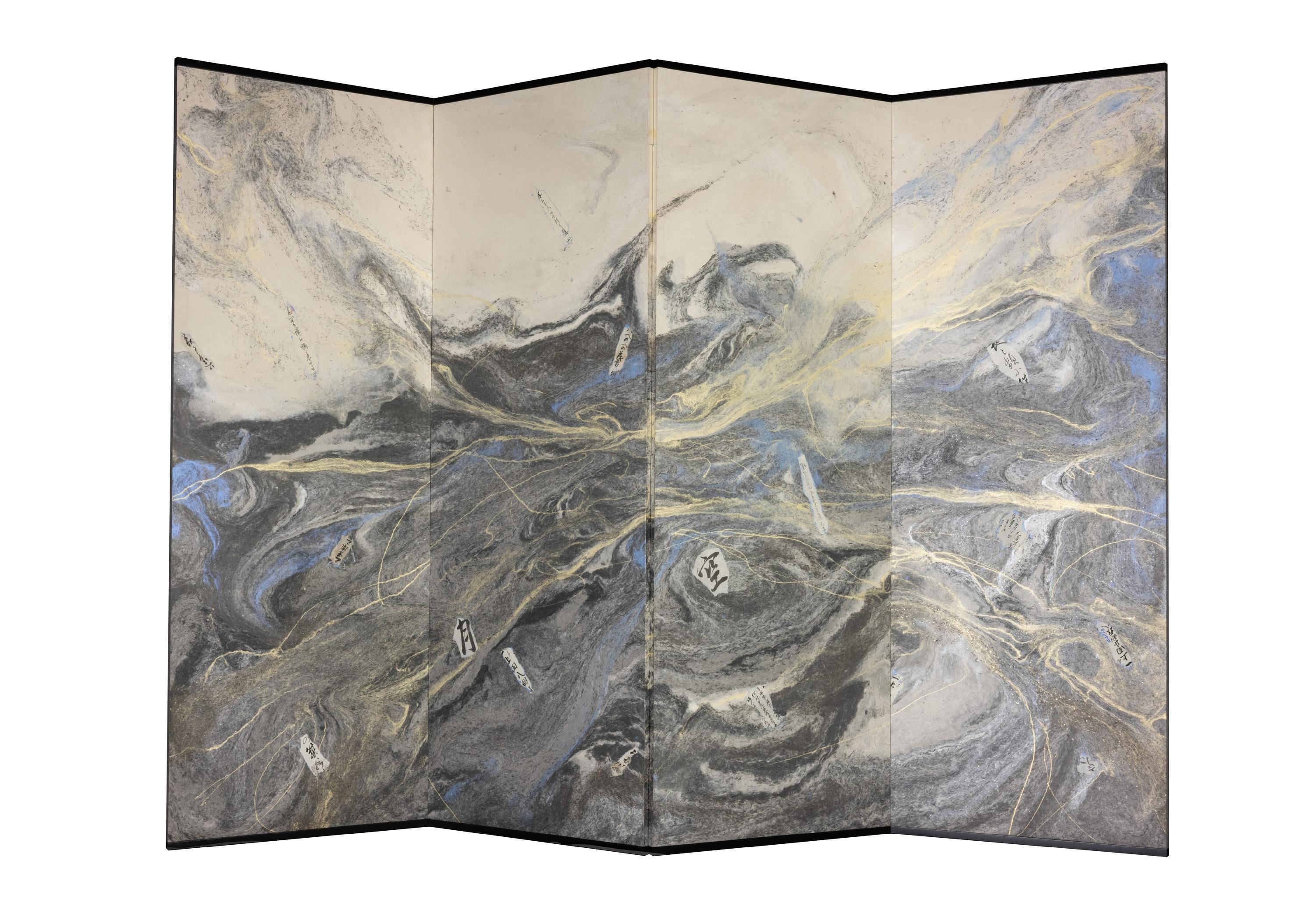
SAKUHIN (WORK) , 2018
Four-panel folding screen; recycled antique ganpi paper fibers, ink, document fragments, mica and mineral pigments 72 x 63 inches

SAKUHIN (WORK) , 2018
Four-panel folding screen; recycled antique ganpi paper fibers, ink, document fragments, mica and mineral pigments 61 x 56 inches

HORIZON , 2013
Recycled gampi paper fiber, old documents, mica and sumi
42 1/2 x 103 1/2 inches
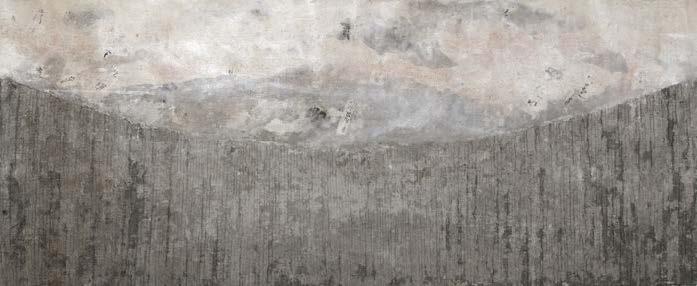
HORIZON , 2009
Washi, recycled gampi paper fibers, old documents, mica and sumi on panel
24 1/4 x 53 3/4 inches
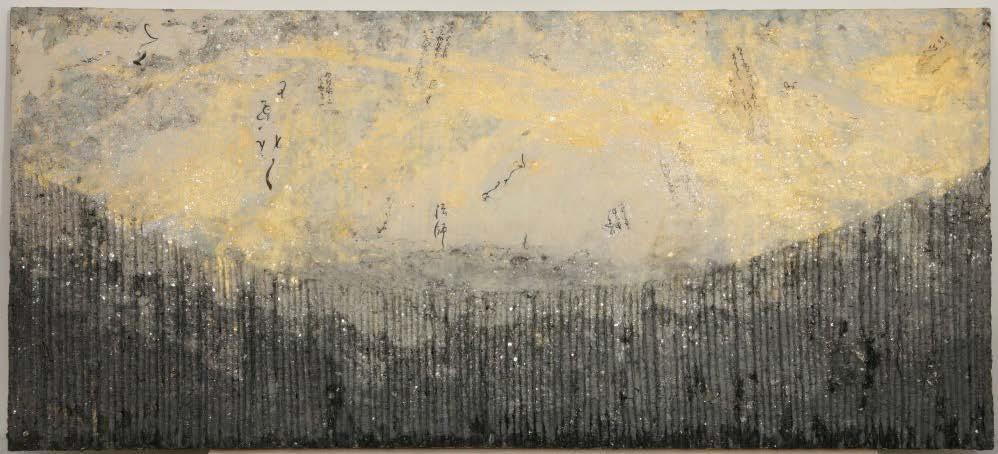
Washi, recycled gampi paper fibers, old documents, mica and sumi on panel
23 1/4 x 46 1/2 inches

TEN CHI JIN (HEAVEN EARTH HUMAN), 2013
Recycled gampi paper fiber, old documents, mica and sumi on panel
45 1/4 x 16 1/4 inches

TEN CHI JIN (HEAVEN EARTH HUMAN), 2013 Recycled gampi paper fiber, old documents, mica and sumi on panel
45 1/2 x 16 1/4 inches

TEN CHI JIN (HEAVEN EARTH HUMAN), 2013
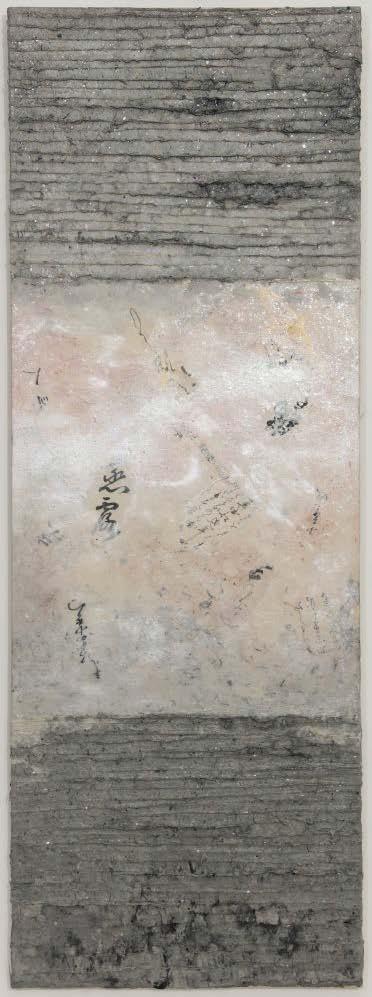
Recycled gampi paper fiber, old documents, mica and sumi on panel
45 1/4 x 16 1/4 inches
TEN CHI JIN (HEAVEN EARTH HUMAN), 2013 Recycled gampi paper fiber, old documents, mica and sumi on panel
29 3/4 x 17 3/4 inches

TEN CHI JIN (HEAVEN EARTH HUMAN), 2013 Recycled gampi paper fiber, old documents, mica and sumi on panel 29 3/4 x 17 3/4 inches

TEN CHI JIN (HEAVEN EARTH HUMAN), 2013 Recycled gampi paper fiber, old documents, mica and sumi on panel
29 3/4 x 17 3/4 inches
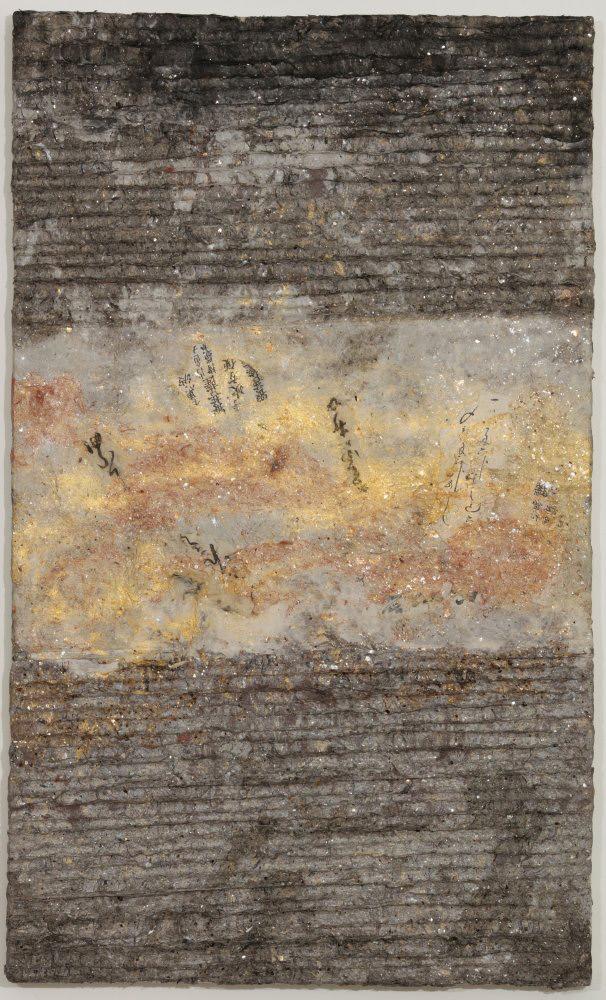
HOGOSHO 09-1 , 2009
Hogosho, old paper, sumi, mica, and natural indigo on panel 18 x 18 inches
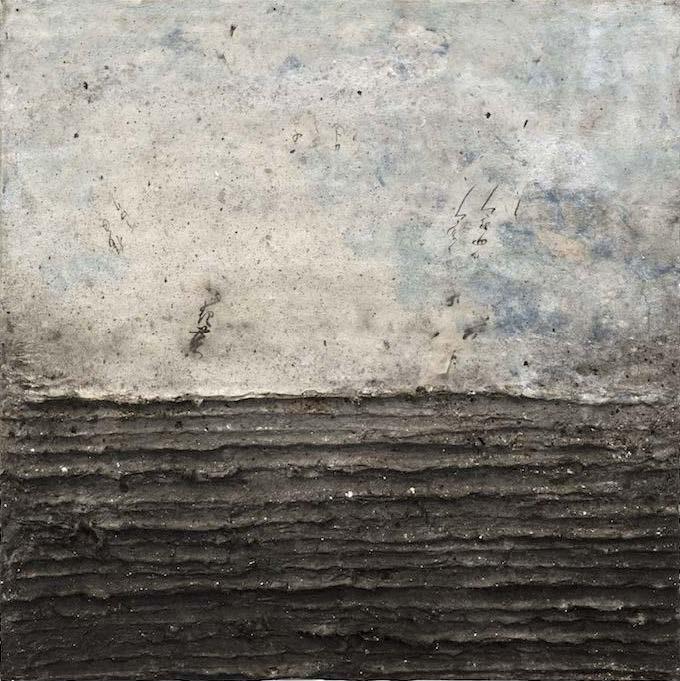
HOGOSHO 09-2 , 2009
Hogosho, old paper, sumi, mica, and natural indigo on panel
18 x 18 inches


Born in Nagoya, Japan in 1941 Lives and works in Kyoto, Japan PUBLIC COLLECTIONS
Art Institute of Chicago, Chicago, Illinois
Kyoto Prefecture Museum, Kyoto, Japan
Kyoto Institute of Technology Museum, Kyoto, Japan
Krannert Art Museum, Illinois University, Champaign, Illinois
Los Angeles County Museum, Los Angeles, California
Mino Paper Museum, Gifu, Japan
Nelson-Atkins Museum of Art, Kansas City, Missouri
Nordjyllands Kunstmuseum, Aalborg, Denmark
Robert C. Williams Museum of Papermaking, Atlanta, Georgia
University of Québec, Québec City, Canada
Utah Fine Art Museum, Salt Lake City, Utah
Scottsdale Museum of Contemporary Art, Scottsdale, Arizona
SELECTED SOLO EXHIBITIONS 2018 Erik Thomsen Gallery, New York, USA 2015 Qatar Art Center, Doha, Qatar 2013 Inga Gallery, Tel Aviv, Israel 2011 Japanese Pavilion, Los Angeles County Museum of Art, Los Angeles, USA 2010 Darb 1718 Contemporary Art and Culture Center, Cairo, Egypt 2000
Fuji City Art Hall, Shizuoka, Japan Gallery 1, Tokyo, Japan Scottsdale Museum of Contemporary Art, USA 1991 Atelierhaus Arlesheim, Basel Canton, Switzerland 1985 Nordjyllands Kunstmuseum, Aalborg, Denmark 1974 Gallery Shisendo, Kyoto, Japan Gallery Iteza, Kyoto, Japan
This catalog compliments Ibe’s Exhibition FABULATION AND REMEMBRANCE 16 DECEMBER 2022 - 29 JANUARY 2023 | Tayloe Piggott Gallery © 2022 All Rights Reserved
